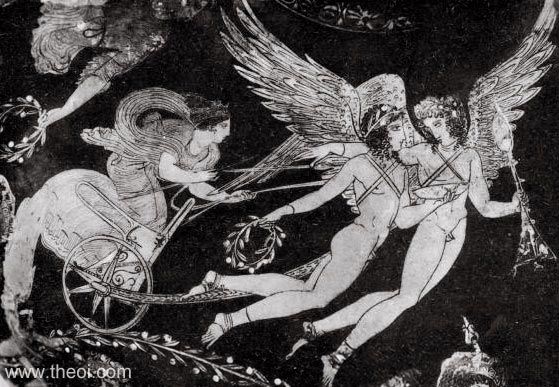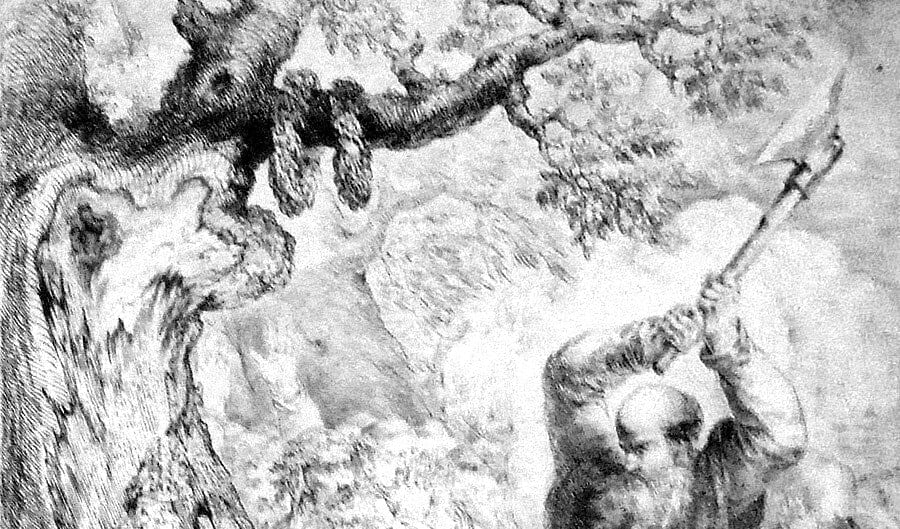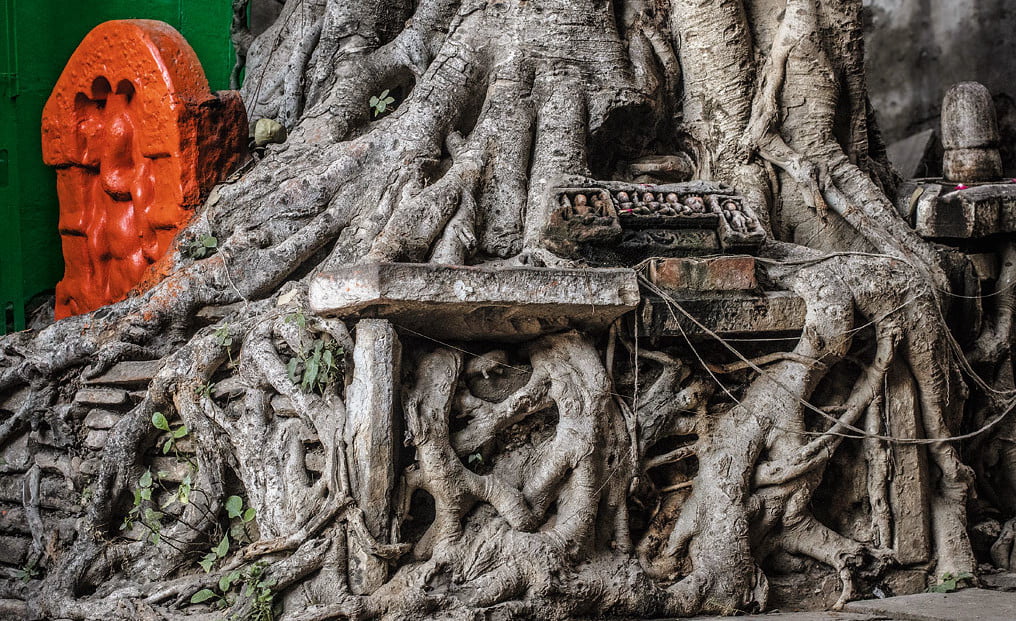Aphrodite Αφροδίτη was the Olympian goddess of love, beauty, pleasure and procreation. The pomegranate, the myrtle and the apple are trees associated with Aphrodite on Cyprus, discover tree lore and mythology.
In this Article
The pomegranate – Aphrodite was said to have first planted it on the island of Cypros, Kypros. The fruit symbolized female fertility and the marital loss of virginity with the consummation of marriage (from both its red stains and rich seeds).
The myrtle-tree and myrrh-bush were sacred to Aphrodite, because her beloved Adonis was born from his metamorphosed form of his mother Myrrha or Smyrna – a myrtle-tree or myrrh-bush
The apple and apple-tree were sacred to the goddess because she was awarded the prize of the golden apple from Paris of Troy and also bestowed golden apples upon Hippomenes in his contest to win Atalanta.
“There is a field the people call the close of Tamasenus, the richest part of all the isle of Cypria,
which long ago was hallowed in my [Aphrodite’s] name and added as endowment to my shrine.
A tree stands in the close with leaves of gold and golden branches rustling in the breeze
[a dedicatory offering, but possibly only mythical].”
Ovid, Metamorphoses 10. 560 ff
POMEGRANATE TREE

Greek : Rhoa, ρόδι, ródi
Species : Punica granatum
Description : A fruit-bearing deciduous shrub or small tree which grows to a height of 5 to 8 metres. It produces a red fruit about the size of an orange, rich in seeds and with a juicy red fruit pulp. The tree was cultivated in ancient orchards alongside the apple, pear, fig and olive.
Sacred to : Hera (the fruit was her attribute as goddess of marriage – the bloody red seeds representing female fertility), Aphrodite (for similar reasons)
Prohibitions : Demeter and Persephone (the fruit was one of the foods prohibited in the Mystery initiations)
The pomegranate was venerated in the cult of Hera (protectress of marriage and childbirth) and was sacred to both Athena and Aphrodite in Kypros.
“Eriphos in the Meliboia . . . :
A : And here are the pomegranates.
B : How nice they are!A : Ay, for they say this was the one and only tree that Aphrodite planted in Kypros.
Athenaeus, Deipnosophistae 3. 84c (Greek rhetorician 2nd to 3rd AD)
B : Worshipful Berbeia!”
N.B. Berbeia was a Kyprian cult title of Aphrodite.
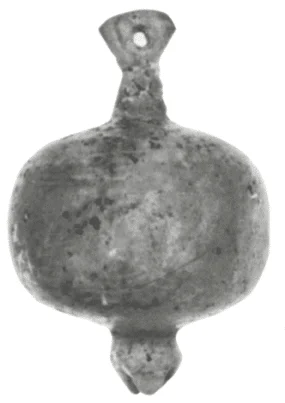
Read mythological stories connected to the varied forms of Aphrodite and the pomegranate tree.
MYTH I : Metamorphosis of Side
Side was the wife of the giant Orion. He boasted to be more beautiful than goddess Hera or Aphrodite. In anger the goddess sent her to Hades. Presumably this was accompanied by a metamorphosis into her namesake fruit tree, the pomegranate.
~ Apollodorus of Athens son of Asclepiades. (Greek scholar, historian, and grammarian).
MYTH II : Rape of Persephone
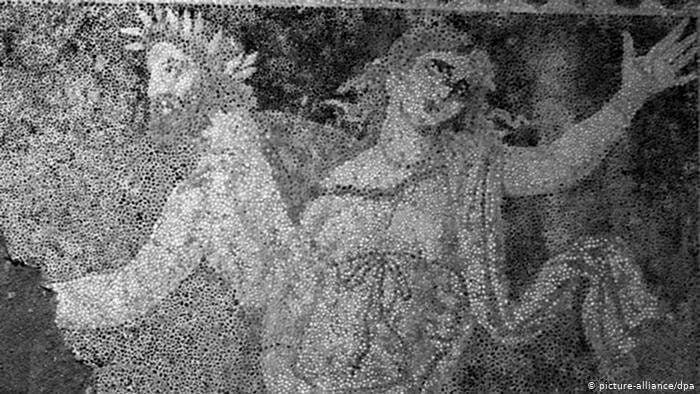
Hades the king of the underworld abducted Persephone for his wife. She refused to eat while she remained with him, until he tempted her with the seed of the pomegranate. She tasted these and in so doing was condemned to spend a portion of each year in the underworld. Her annual return to earth symbolizes, the coming of Spring and fertility.
~ Homeric hymn
MYTH III : Orchadist Askalaphos
The keeper of the pomegranate orchards of Haides reported to his master that Persephone had tasted of the seed. As punishment for this Demeter turned him into a screech owl.
~ Apollodorus, Ovid
“[Aphrodite laments the death of her love Adonis :] ‘Your blood shall change into a flower . . . and ere an hour had passed a blood-red flower arose, like the rich bloom of pomegranates . . . yet is it’s beauty brief, so lightly cling it’s petals, fall so soon, when the winds [anemoi] blow that give the flower [anemone] its name.’”
~ Ovid, Metamorphoses 10. 705 ff (Roman epic C1st BC to C1st AD)
The fruit symbolized the consummation of marriage and the loss of female virginity (Persephone).
It was also believed to work as a natural abortion agent.
Already in early times, the Greeks considered the fruit of the pomegranate, containing numerous small fleshy seeds, a symbol of fertility.
Both these aspects of the pomegranate passed into the Christian world and survived into modern times.

The fleshy seeds are one of the main ingredients of kollyva (a preparation based on wheat grains offered to the congregation at memorial services), the use of which still associates the fruit with the underworld; while in a traditional wedding, on coming home from the church the bride had to crush a pomegranate at the entrance of the house – the spreading of the numerous little seeds symbolizing a rich offspring.
The picture on the right is showing “Verulamium Venus”, a bronze statuette of Venus holding an apple in her left hand. Some scholars write it is Persephone holding a pomegranate, 2nd century AD, Verulamium Museum, St Albans
MYRTLE & MYRRH
Both plants were connected with the birth of Adonis (in two alternate versions of the story).
“Once upon a time, the gods selected the trees which they wished to adopt as their own. Jove [Zeus] chose the oak tree, while Venus [Aphrodite] preferred the myrtle tree, Phoebus [Apollon] the laurel.
Aesop, Fables 205 (from Phaedrus 3. 17) (Greek fable c. 6th B.C.)
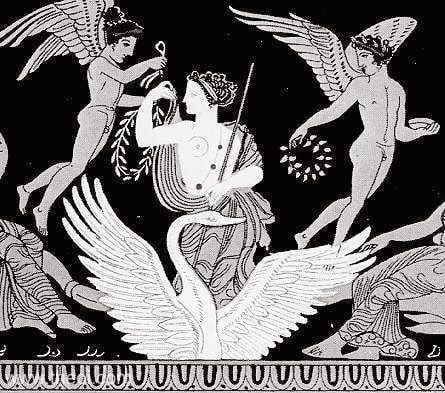
“The rose and the myrtle are sacred to Aphrodite and connected with the story of Adonis.”
“Here [in Aphrodite’s temple at Troizenos] there still grew the myrtle, with its leaves . . . pierced with holes.”
“[There is] an image of Aphrodite in Temnos [in Elis] made of a living myrtle-tree.”
Pausanias, Description of Greece (Greek travelogue C2nd AD)
“[Caesar is praised as a descendant of Aeneas:] Wreathing your brows with your mother’s [Aphrodite’s] myrtle.”
“Paphian myrtles.” [N.B. The Paphian is Aphrodite.]
Virgil, Georgics (Roman bucolic C1st BC)

“About her hair she twined that herb of passion [the myrtle] which Kythereia [Aphrodite] loves as much as the rose, as much as the anemone.”
Nonnus, Dionysiaca 32. 10 ff (Greek epic C5th AD)
MYRRH TREE

Greek : Smyrna, myrra
Species : Commiphora myrrha
Description : A small, spiny desert tree native to Arabia and the horn of Africa. Its valuable, aromatic gum resin was harvested and burnt as an incense in ancient religious shrines and still used widely in India.
Sacred to : Aphrodite (festal myrrh incense)
Read mythological stories connected to the worship of Aphrodite and the myrrh tree.
MYTH : Metamorphosis Smyrna
Smyrna (or Myrrha) was a Cyprian, Lebanese or Assyrian princess whose mother dared to compare her in beauty to the goddess Aphrodite. The offended divinity caused the girl to fall in love with her own father as punishment.
When the King discovered his daughter had seduced him in disguise, he pursued her with an axe, but the goddess mercifully intervened by transforming Smyrna into a myrrh tree. Adonis was later born of the incestuous union from the tree’s trunk and entrusted to the care of Nymphs.
The tears of the girl formed the aromatic gum of myrrh.
The boy Adonis was later born from her trunk.
~ Apollodorus, Antoninus Liberalis, Plutarch, Hyginus, Ovid.
A similar story is told of Myrrha and the myrtle tree.
MYRTLE
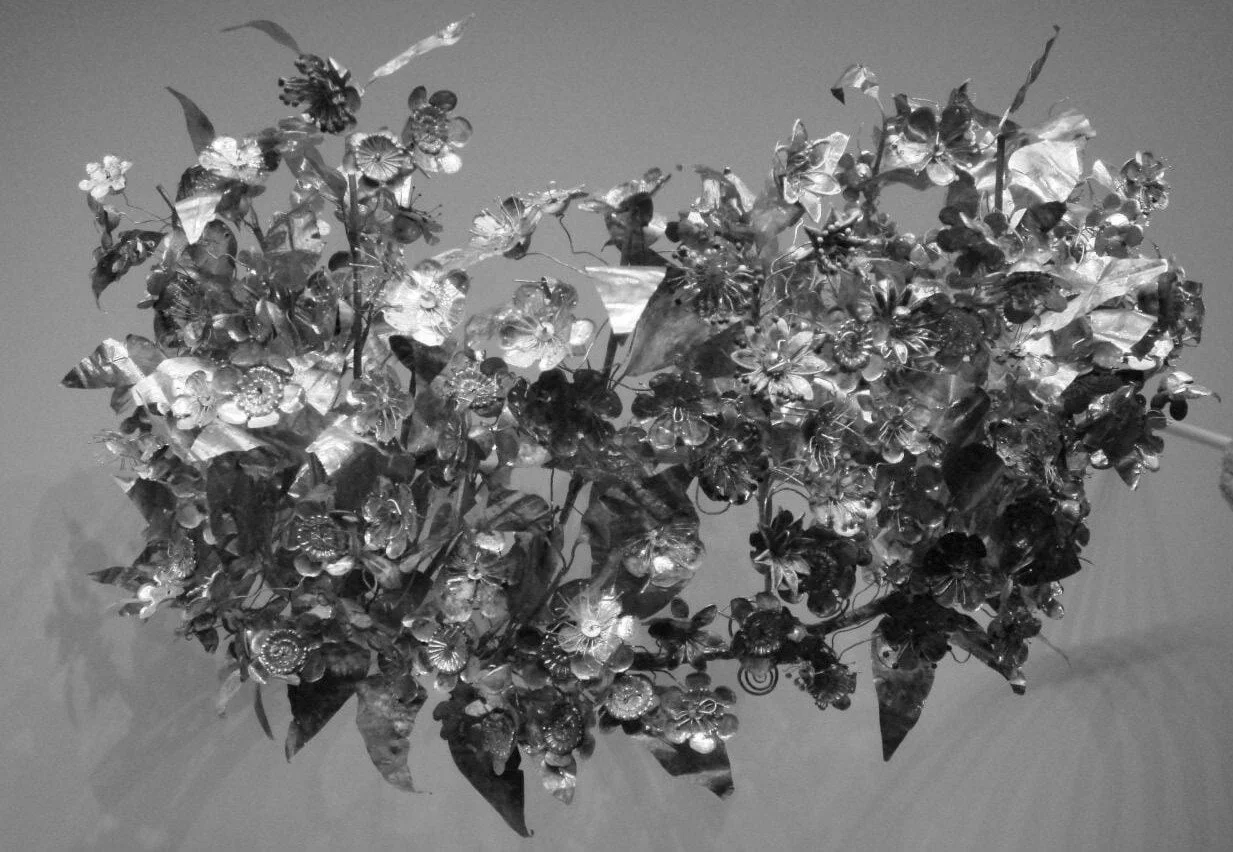
Greek : Myrsinê, myrrinê, myrtos
Species : Myrtus communis
Description : A small evergreen tree or shrub with aromatic, spicy-tasting leaves. It blooms with sweet-scented, white flowers in spring and summer, and produces edible blue-black berries.
Sacred to : Aphrodite (brides wore myrtle-garlands and bathed in myrtle-scented water on their wedding day)
It was behind a myrtle that she hid her nakedness when she rose from the sea at Paphos.
The myrtle symbolizes beauty and youth because of its evergreen leaves, beautiful and elegant flowers and pleasant perfume. Myrtle branches were commonly used to decorate temples and sanctuaries. It is, perhaps, because of its beauty and association with Aphrodite that, in traditional weddings, the myrtle is used for making wedding wreaths.

Its use in temples also survives today in the custom of decorating churches and strewing their floors with myrtle branches during special celebrations or for the welcoming of personalities.
MYTH I: Why the myrtle leaf appears pierced with numerous little holes
Held against the light, the myrtle leaf appears pierced with numerous little holes (glands of volatile myrtle-oil). These the ancients believed to have been needle holes made by the unhappy Phaedra, wife of Theseus, at Troizen in Attica, before hanging herself, after having her love repulsed by her stepson Hippolytos.
~ Pausanias (Pausanias was a Greek traveler and geographer)
Another version says that Phaedra made the little holes in Aphrodite’s sanctuary at Troizen to avenge herself because the goddess had not helped her to win over Hippolytos.
MYTH II: Metamorphosis of Myrrha
Myrrha was a Cyprian princess who fell in love with her father and conspired to seduce him in disguise. When he learned of her crime, she fled his wrath and was transformed into a myrtle tree. The boy Adonis was later born from her trunk.
The same story – as mentioned above – is told of Smyrna and the myrrh tree.
~ Pausanias
“…Some Power is open to a penitent; for sure her final prayer found gods to hear. For, as she spoke, around her legs the earth crept up; roots thrusting from her toes spread sideways, firm foundations of a trunk; her bones gained strength; though marrow still remained, blood became sap, her fingers twigs, her arms branches, her skin was hardened into bark. And now the growing tree had tightly swathed her swelling womb, had overlapped her breast, ready to wrap her neck.
She would not wait, but sinking down to meet the climbing wood, buried her face and forehead in the bark. Though with her body she had forfeited her former feelings, still she weeps and down the tree the warm drops ooze. Those tears in truth have honour; from the trunk the weeping myrrh keeps on men’s lips for aye the name of her.”

~ Ovid, Metamorphoses 10. 298 ff (Roman epic 1st B.C. to 1st A.D.)
The Birth of Adonis on the right. “Pitying Lucina stood near the groaning branches, laid her hand on them, and uttered charms to aid the birth.”
(Ovid. Met. 10.510). Guillaume T. de Villenave, Les Métamorphoses d’Ovide (Paris, Didot 1806–07). Engravings after originals by Jean-Jacques François Le Barbier (1739–1826), Nicolas André Monsiau (1754–1837), and Jean-Michel Moreau (1741–1814).
TEMNOS Village in Elis – Southern Greece
“If you cross the river Hermos you see an image of Aphrodite in Temnos [in Elis] made of a living myrtle-tree. It is a tradition among us that it was dedicated by Pelops when he was propitiating the goddess and asking for Hippodameia to be his bride.”
Pausanias, Description of Greece 5. 13. 7 (Greek travelogue C 2nd A.D.)
APPLE (Greek melon)
Greek : Mêlon, milo.
Species : Malus domestica
Description : The apple-tree was an important orchard fruit of ancient Greece and associated with love and marriage.
Sacred to : Hera (associated with weddings), Aphrodite (associated with love)
“[The statue of Aphrodite in Sikyon is] carrying in one hand a poppy and in the other an apple.”
Pausanias, Description of Greece 2. 10. 4 (Greek travelogue C2nd AD)

Description of an ancient Greek painting : ” The Erotes [winged gods associated with love and sexual intercourse] bring [to Aphrodite] first-fruits of the apples, and gathering around they pray to her that their apple-orchard may prosper.”
Philostratus the Elder, Imagines 1. 6 (Greek rhetorician C3rd AD)
“Kypris [Aphrodite] together with the Erotes (Loves) decked out a fine bed for the wedding, hanging in the bridal chamber golden fruit [apples] from the Nymphai’s garden, a worthy love gift for the bride; rich clusters of their leaves Harmonia and Kadmos twined through their hair, amid the abundance of their bridechamber, in place of the wedding-roses. Still more dainty the bride appeared wearing these golden gifts, the boon of golden Aphrodite.”
Nonnus, Dionysiaca 13. 333 ff (Greek epic C5th AD)
“[The statue of Nemesis at Rhamnousous was] modeled on the appearance of Aphrodite; that is why she held a sprig from an apple-tree.”
Suidas s.v. Rhamnousia Nemesis (Byzantine Greek lexicon C10th AD)
The Feast of Venus

The fourth book (April) of Ovid’s Fasti also served as inspiration for Rubens’ The Feast of Venus. A portion of the poem describes a women’s festival held on April 1 to honor both Venus Verticordia and Fortuna Virilis. Per Ovid, the festival includes the washing and decoration of a statue of Venus, ritual bathing under boughs of myrtle and offerings of incense. Rubens based the artwork on the “Imagines I, VI”of the Greek sophist Philostratus:
“See cupids are gathering apples: and if there are many of them, do not be surprised…
The cupids’ quivers are studded with gold, and golden also are the darts in them…
they have hung their quivers on the apple trees; and in the grass lie their broidered mantles…
Ah, the baskets into which they gather their apples!”
MYTH I : Wedding of Hera
The earth-goddess Gaia produced first apple-tree as a wedding-present for the goddess Hera. This tree of the golden apples was guarded by the three goddess Hesperides.
~ Apollodorus, Hyginus
MYTH II : Judgment of Paris
At the wedding of Peleus and Thetis, Eris the goddess of strife, cast a golden apple addressed to the fairest amongst the goddesses.
Aphrodite, Hera and Athene all laid claim to the prize. They were referred by Zeus to the shepherd prince Paris, who awarded the apple to Aphrodite, goddess of love and beauty.
~ Stasinus, Apollodorus
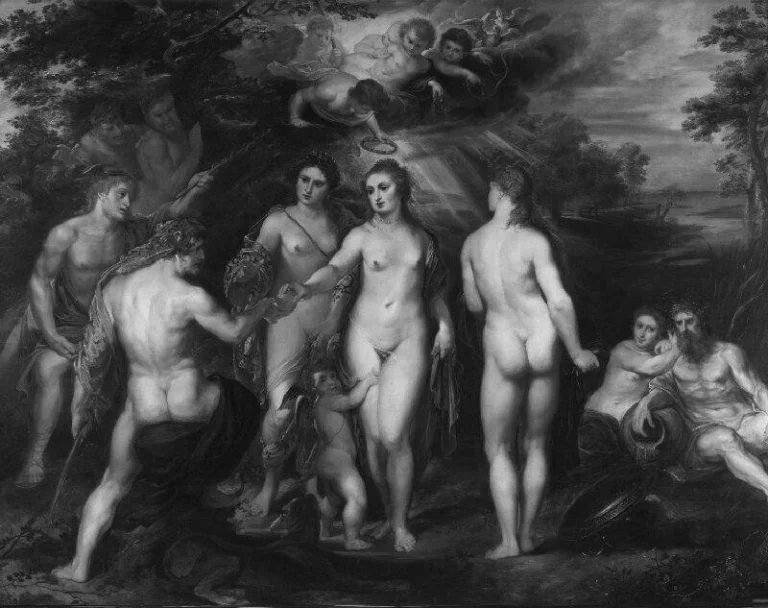
MYTH III : Melanion & Atalanta
The beautiful-princess Atalanta was reluctant to wed, and insisted that her suitors best her in a race. Those who failed the contest would be put to death by her father. The youth Melanion (meaning: he of the apples) prayed to Aphrodite for help, and the goddess presented him with three golden apples. These he cast before the princess in the race, slowing her down as she stooped to retrieve them and so won the race.
~ Hesiod, Apollodorus, Ovid
MYTH IV : Nymphai Epimelides
The nymph-protectors of apple-orchards.
LINDEN OR LIME (Tilia)

Greek : Philyra
Species : Tilia platyphyllos
Description : A deciduous tree which grows to a height of 60 to 80 feet. The linden blooms with fragrant yellowish-white flowers in mid-summer.
Sacred to : Perhaps Aphrodite
The Scythian diviners take also the leaf of the linden tree, which, dividing into three parts, they twine round their fingers; they then unbind it and exercise the art to which they pretend.
Herodotus
The Scythian worshiped a goddess called Argimpasa (Ἀργίμπασα) connected to Aphrodite. The Enarei were a privileged caste of hereditary priests which played an important political role in Scythian society as they were believed to have received the gift of prophesy directly from the goddess Argimpasa.
The method employed by the Enarei differed from that practiced by traditional Scythian diviners: whereas the latter used a bundle of willow rods, the Enarei used strips cut from the bark of the linden tree (genus tilia) to tell the future. The Enarei were also noted for dressing themselves in the clothes of women, a custom which Herodotus understands as being reflected in the title ena-rei, glossing this as ἀνδρό-γυνοι, ἀνδρόγυνος or “man-women”.
According to Herodotus, Cyprus was colonized from Greece, Phoenicia, and Ethiopia. Referring to the plundering of the temple of Aphrodite at Askalon [Israel] by the Scythians, he states that her temple in Cyprus was an offshoot from that ancient foundation, as reported by the Cyprians themselves, Phoenicians having founded it at Cythera [island in the south of Peoponnes], on arriving from Syria. The date of the earliest Phoenician settlements in Cyprus is unknown, but it has been suggested that they were anterior to the time of Moses.
~ Bible
MYTH I : Metamorphosis of Philyre
Philyra was a Thessalian Nymphe loved by the Titan Kronos. When his wife Rhea interrupted their rendezvous he transformed himself into a horse and fled. Philyra was later so ashamed at having given birth to the half-horse Kheiron that she begged Zeus to change her form. He agreed, transforming her into a linden tree.
~ Hyginus
MYTH II : Metamorphosis Baucis et Philemon
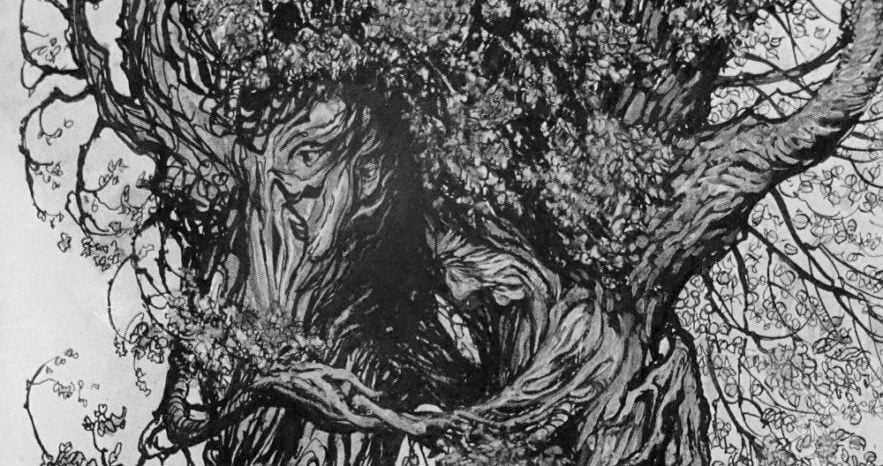
Philemon and Baucis were a pious couple who hospitably received the gods Zeus and Hermes when they were travelling amongst mankind in disguise.
The gods destroyed those who had turned them away and rewarded the couple by making them priests of the temple and transforming them into a pair of entwined trees at death:
Baucis a linden, and Philemon an oak.
~ Ovid
Picture of Old Philemon and Old Baucis. Arthur Rackham. From a “A Wonder Book” by Nathaniel Hawthorne. London: Hodder & Stoughton, (1922).
~ ○ ~
Keep exploring:
Works Cited & Multimedia Sources
- Aphrodite. https://www.theoi.com/Olympios/AphroditeTreasures.html#Plants
- Cypriot myths. http://www.cyprusfortravellers.net/en/review/cypriot-myths-heros-and-gods
- Karageorghis Jacqueline. Kypris The Aphrodite of Cyprus. 2005.
- PIC: Aphrodite rides on the back of the swan accompanied by a pair of winged Erotes (love-gods) holding myrtle wreaths. This is a drawing of the vase rather than a photograph. https://www.theoi.com/Gallery/K10.11.html
- Plants of Greek Myth. Also several illustrations are taken from this treasure trove. Flora 1&2 https://www.theoi.com/Flora2.html https://www.theoi.com/Flora1.html
- Sacred Plants & Flowers
